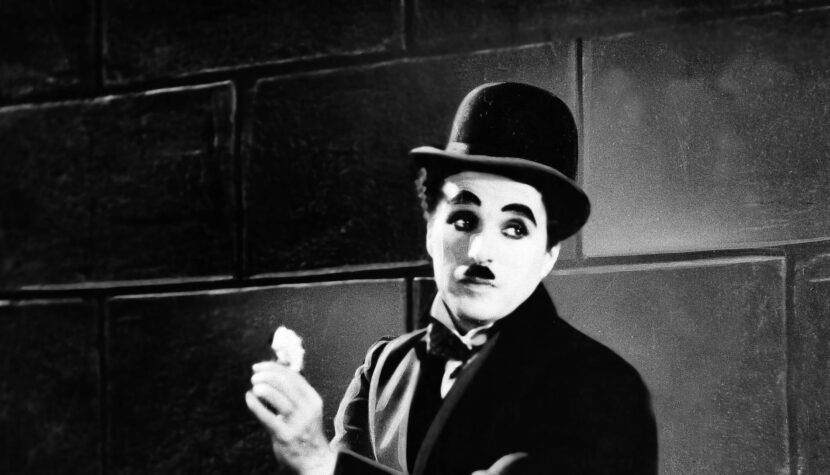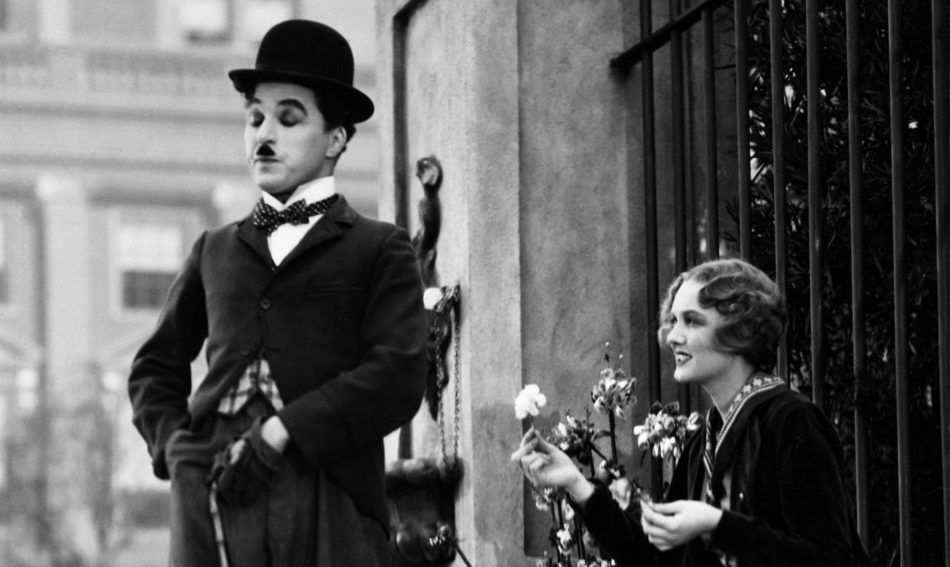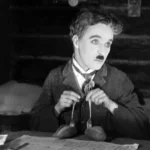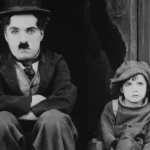CHARLIE CHAPLIN. 5 essential movies you should see

If I had to choose my favorite filmmaker, it would be – with all my sympathy for some contemporary directors – Charlie Chaplin. The timelessness of this artist’s works shines through in every frame, gag and dramatic scene of his authorship. Films, most of which do not say a single word, take us on a journey full of laughter, emotion and deep emotions. Chaplin’s sense of humor comes with a rare sensitivity and an extremely brilliant view of the world around him. Creating his own, even almost a century later, he takes us on a wonderful journey.
Today I join it with the greatest pleasure, thinking back to five of Chaplin’s favorite films, which are a perfect mix of the emotions mentioned above. The iconic figure of a vagabond, portrayed in various situations, never ceases to be the embodiment of goodness and innocence, creating a protagonist whom it is difficult not to root for. It is no different in the case of the first of the films mentioned here.
Related:
The Kid

The Kid (1921) begins with a board announcing both laughter and tears. In the face of the development of the plot of this less than an hour-long film, this is extremely relevant information, although in fact it could be inserted at the beginning of each of the artist’s works. The tramp, taking care of a boy abandoned by his mother and raising him for the next five years, becomes a paternal figure for him. This creates a mutual, strong bond, especially since both characters live in poverty and work together to survive the next days. Although The Kid does not lack comedic elements, the dramatic layer is the most memorable here. Chaplin-actor and Chaplin-director is an irreplaceable master of conveying huge content with a gesture and look alone, and his partner Jackie Coogan is as real in his feelings as only a child can be. The memorable chase scene and its climax still grip the throat to this day, because they bring out the features of both main characters in the best possible way – they may be emotionally fragile, but they do not lack the fortitude and determination that allows them to survive on the streets. Above all, however, they are incomplete without each other. The guardian and the ward have become a very close family through these few, and this is the greatest wealth for them and Chaplin tells about it beautifully.
The Gold Rush

The artist was inspired to create The Gold Rush (1925) by tragic stories about gold prospectors and immigrants from the late nineteenth century. Of course, the creator did not intend to create a drama in the strict sense – on the contrary, following his belief that tragedy and comedy lie very close to each other, he decided to turn the stories he read into a gag-filled, hilarious film. In no way is this making fun of human suffering. Watching the adventures of a vagabond-seeker, it is not difficult to feel regret, because Chaplin does not neglect his characters, but at the same time he presents the situation in such a way that it is just as easy to laugh without remorse. Of course, the greatest merit is his acting talent and innate charm. It will not be an exaggeration to say that in The Gold Rush we will find scenes that are not only one of the most famous in Chaplin’s oeuvre, but also of the entire cinematography. Dancing buns, eating a shoe (inspired by true stories) and finally the sequence with the tilted hut constantly delight, not only within the silent cinema.
City Lights

While The Gold Rush is a great example of Chaplin’s comedic talent, City Lights (1931) is one of those great examples of his great sensitivity. Created already in the age of sound and consciously ignoring technical progress, as not a single word is spoken in the film after all. Chaplin’s decision to stick with the form he was already familiar with initially raised concerns about the success of the production – unfounded, as it turned out, because City Lights is considered by many to be the artist’s best film (and Orson Welles’ favorite in general).
The story of the tramp is focused this time on his infatuation with a young, blind florist, whom he wants to support financially despite his own poverty. Unaware of the truth, the girl is convinced that her new acquaintance is a wealthy man, and the tramp does not think to correct her mistake. So we follow his relationship with the florist, as well as his acquaintance with an actual rich man whom he saved from suicide one night. The second thread is a fantastically tied comedy based on a very simple idea – a rich man only associates a tramp in a state of intoxication. That’s enough for Chaplin to squeeze a lot of humor out of this thread without going around in circles. The real masterpiece of comedy, however, is the famous boxing fight scene, thanks to which the tramp hopes to win money. Chaplin accumulates here a lot of brilliant gags that give a fantastic pace. One of his best scenes.
However, the greatest thing that City Lights gives us is the already mentioned romantic thread. Behind the scenes it wasn’t so charming, because Chaplin’s perfectionism resulted in a lot of doubles and nerves (Virginia Cherrill, who played the florist, was even fired by him, at least temporarily), but on the other hand, this pursuit of perfection actually resulted in him. The relationship between the Tramp and the florist is simply beautiful in its purity and innocence mentioned earlier, and it’s hard not to smile when you see them together. The final scene is a perfect closure and one of those unique, magical movie moments. Just thinking about it warms my heart.
Modern Times

During the promotion of Lights…, Chaplin’s idea for Modern Times (1936) was born in Chaplin’s head. The artist was inspired by contact with the direct financial effects of the Great Depression, which, according to him, was caused by the industrialization of the time. This is an important film for at least two reasons – firstly, in it we say goodbye to the classic figure of a tramp in a bowler hat. Secondly, this is the only time this character has the opportunity to present his voice to the audience. Chaplin originally intended Modern Times to be fully voiced. Eventually, however, he withdrew from this idea and so the first opportunity to hear him was one singing scene – and in a non-existent language! This fact alone could give her a place in the history of cinema, but Chaplin does not slow down and additionally complements her with another great comedy show.
We meet the tramp himself as a worker in a modern factory, as he struggles with technological progress that overwhelms him (excellent scene with the feeding machine!). As a result of coincidences, he meets Ellen, a poor, orphaned girl, with whom he forms a friendship, and together they try to find themselves in a difficult environment, where it is easiest to find a roof over your head when you are in prison. Chaplin successfully combines comedy and drama as standard. Although the situation of the tramp and Ellen is by no means the most cheerful, the artist successfully manages to bring a smile to the viewer’s face, while not underestimating the situation of his characters or the social situation he comments on.
The Dictator

The situation is similar in the case of The Dictator (1940), although here the subject of the commentary is extremely delicate. This time, Chaplin fulfilled the assumption of making a fully sound film, but he still refers to his silent film tradition in several scenes. The creator cast himself in two roles – a Jewish hairdresser (drawing a bit on the character of a tramp, no longer present here), and Adenoid Hynkel, based of course on Hitler. The Nazi and Chaplin were often compared with each other – their birth was only a few days apart, both came from a poor background, and finally attention was paid to the similarity in their facial hair. Chaplin absolutely does not hold back in parodying this character, presenting Nazi speeches caricatured and creating another scene that went down in the history of cinema – of course, I mean the famous dance with a globe. Hynkel, completely self-absorbed, left alone in his study, plays with the inflatable globe, turning the world in his hands, reflecting it, finally destroying it completely. Absolute mastery – this simple scene simultaneously amuses, saddens and even disturbs with the accuracy of Chaplin’s allegories and predictions as to the development of the war.
As with his previous films, the artist takes up a difficult subject very carefully – yes, he makes it a joke, but he does it with taste, leaving room for conclusions and reflection. The fate of the Jews, often humorously presented, ultimately manages to engage and take over the viewer, with particular reference to the famous speech that Chaplin delivers through the lips of a hairdresser. The Dictator also has wonderfully staged scenes – if someone makes an ordinary razor shave one of the best moments of the film (I recommend checking out why), then all I can do is bow.
The Dictator is one of Chaplin’s most acclaimed films today. The creator himself stated in his 1964 autobiography that he would not have created it knowing exactly what was going on in the Nazi concentration camps.
In 1972, Chaplin received his honorary Oscar. He was then eighty-three years old. When he came on stage, he got a standing ovation for several minutes. Among those cheering was Jack Coogan, who had appeared more than fifty years earlier as the eponymous toddler. I regard this moment as one of the most beautiful in history. Charlie’s face is filled with emotion and you might even think that images from his life are flashing before his eyes. Moments of satisfaction when he succeeded in the scene. The moment when he put the bowler hat on his head for the first time. All those with whom he had the opportunity to collaborate over the years, creating unforgettable films. The above-mentioned five works are a fragment of his great work and heritage, quite rightly delighting subsequent generations. I have no words to adequately express my respect for the innovation, courage, humor and heart of this great creator. I can only encourage you to see for yourself what he left behind.




